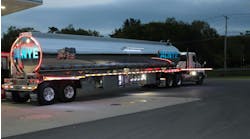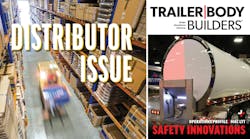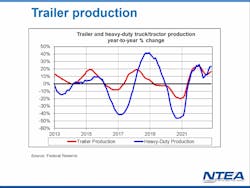While economic forecasts for 2023 have grown increasingly pessimistic in recent months, there’s still some good news: The downturn will not be steep, nor long-lived.
“We tend to think really bad things when we hear the word ‘recession,’ but, in this case, what's anticipated is a very shallow and very short recession expected in 2023,” explained Steve Latin-Kasper, NTEA senior director of market data and research. “Hopefully, it’s the final part of the rebalancing act that we've been engaged in since the pandemic hit back in March 2020.”
In the Jan. 11 online presentation, “Understanding market dynamics influencing the work truck industry in 2023,” Latin-Kasper noted that economists are divided on the timing, with some forecasting the downturn will hit in the spring, while others see a summer slowdown. Regardless, the rebound will follow quickly.Broadly, the NABE Outlook for this year forecasts GDP growth of 0.3%, decidedly lower than the organization’s forecast of 2.1% growth from six months ago. The forecasts for various investment measures, likewise, have been significantly reduced, while the consumer price index forecast has risen.
Inflation remains a key economic factor, which Latin-Kasper noted is trending downward—“and that’s a good thing”—but remains high. And that will prompt the Fed to continue to tinker with interest rates, targeting a 2% rate of inflation. Latin-Kasper suggested a more achievable target of 3% by the third quarter.
Of note, however, unemployment measures are not following the usual pattern for times of high inflation and falling GDP—and the strong labor market is a good indication that any recession will be mild.
See also: Cooling demand, recession concerns kick off 2023, though trucking can expect gains
“We’ll probably continue growing in the first and second quarter and have more difficulty in the second half than we do in the first half,” Latin-Kasper said. “To the extent we have a recession at all, whichever quarters we get some growth in 2023 are likely to outweigh the quarters we go down in—so that, at year-end, we still have an annual comparison to 2022 that is slightly positive.”
So what does a “slightly positive” year mean for trucking and equipment suppliers?
According to monthly chassis statistics from NTEA, the association for the work truck industry, sales for all classes will be up in 2023, although growth in previously hot markets such as Classes 2, 6, and 8 will moderate to lower single digits. Class 5, on the other hand, will rebound nicely from a dismal 2022, and Class 3—which slipped into negative growth last year after an exceptionally strong 2021—gets back into positive territory, barely.
Classes 7/8 complete vehicle sales will post a respectable 4% gain, especially in following 2022’s 18% surge. Commercial vans, which posted declines in 2021 and 2022, will be up 7.5%, per the NTEA report.
Trailer production will continue to mirror the heavy-duty truck market, Latin-Kasper added, although with less volatility caused by supply chain challenges.
Regarding high diesel prices, Latin-Kasper noted that big carriers have been able to get rate increases—but generally, higher costs have had an impact on profitability. And the situation might have worsened.
“If it wasn't for a whole bunch of other things going on that have to do with supply chain disruptions and chassis availability, primarily, we would have had a situation where profit margins were being squeezed badly and having an impact on overall demand from the fleets for trucks and truck equipment,” he said. “That's not happening because supplies are still so far behind demand—so this particular situation is not as impactful as it might have been otherwise."
As for commodities, prices for aluminum and steel will continue to fall from the mid-2022 peaks.
“[Prices] are nowhere near the bottom they reached during the pandemic, but they’re returning to the trend level, going back to pre-pandemic,” Latin-Kasper said.
In wrapping up with the pros and cons for the forecast, Latin-Kasper’s positives for 2023 include:
- Solid quoting activity
- Strong backlogs
- Ongoing fleet demand
- Stable consumer and capital expenditures
- Low unemployment
On the downside for the coming year:
- Chassis availability uncertainty
- Supply chains are improving, but slowly
- Inflation—and whether it’s peaked
- Rising interest rates
- Labor market imbalances
- Massive political uncertainty, both U.S. and international
Indeed, Latin-Kasper noted that while supply chains have improved, some high-risk factors remain—with China topping the list.
“The fact is that China supplies so many parts for so many OEMs—not just in North America, but around the world. Could we still be impacted by plant closures in China going forward, as COVID is surging as a result of their getting rid of their zero-tolerance policy? The answer is definitely ‘yes,’” he said. “So, could supply chains get worse get again? Potentially. It is a low probability, at this point, that may change in the not-too-distant future.
“But there is still reason to believe that the supply chains are more likely to continue improving. And, at the moment, we’re still feeling pretty good about it.”












